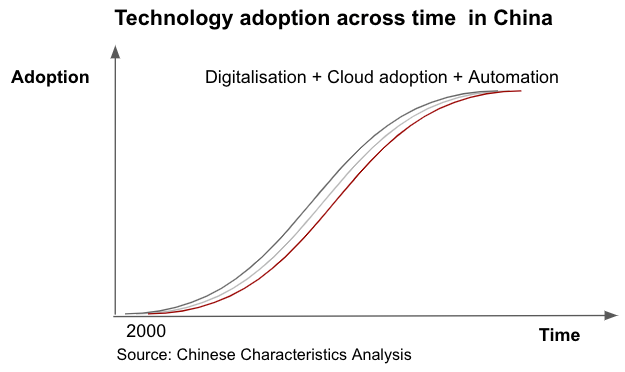
1) Let's talk about a growth hack that Chinese apps use to get those eye-watering DAU and user numbers.
It's 地推 aka field sales but not as we know it. An entire ecosystem springs up to take advantage of sign-up subsidies to hook some bargain hunting users.
It's 地推 aka field sales but not as we know it. An entire ecosystem springs up to take advantage of sign-up subsidies to hook some bargain hunting users.
2) While chillin' with @passluo today in Chengdu, we were approached by university students who asked us whether we had Kuaishou Express app. If we downloaded the app, the students earn 8 RMB / $1.25.
We Pass'ed...hoho
Pass proceeded to school me on how app sign-ups are done
We Pass'ed...hoho
Pass proceeded to school me on how app sign-ups are done
3) Turns out consumer apps will have 'co-operation partners agreement' with 3P companies when they are pushing out new apps. For every new user that signs up, these companies get a fee ranging from 50 RMB - 10 RMB / $7 - $1.5(depending on the app and region)
4) Each user isn't much but scaled up, that could be a business. So these companies will pursue a variety of tactics
- get university students to hit up pass bys on busy streets
- set up shops outside heavily foot trafficked areas like shopping centres and give out goodies
- get university students to hit up pass bys on busy streets
- set up shops outside heavily foot trafficked areas like shopping centres and give out goodies
5) A quick search on the internets reveals a variety of these stalls that gives out cheap goods in return for users to sign-up. A Zhihu (Chinese Quora) even list the prices for these gifts (toy gun - 4 RMB, tissue - 1 RMB, all procured from Pinduoduo) 



6) Accounting for cost of gifts, labour costs and everything else, the company can still turn a profit at scale if they sign up 120-150 people a day.
Interesting it's a third party who's organising all of this, the consumer apps themselves just sit back and payout.
Interesting it's a third party who's organising all of this, the consumer apps themselves just sit back and payout.
7) It's probably a win-win-win set-up, the consumer app company gets users in a hard to reach area (usually lower-tier cities that aren't heavily penetrated), the third companies make a profit and the user walks away with a new app and maybe some eggs or TP.
8) This kind of offline typically acquisition doesn't work in the west given how high labour costs and gifts are.
Remember the gifts are on top of the in-app subsidies a new user gets upon joining.
Remember the gifts are on top of the in-app subsidies a new user gets upon joining.
9) Pass made a poignant point on how the actual heavy lifting of a lot of consumer app companies, user sign-ups, deliveries and community group management are all done by local workforces not directly on consumer tech's payroll.
The hidden masses that keep the machines running.
The hidden masses that keep the machines running.
I'm writing threads like this for the rest of May, follow me if you'd like these to spam your TL.
Thanks to @passluo for the thoughts and a great walk around Chengdu today!
Thanks to @passluo for the thoughts and a great walk around Chengdu today!
• • •
Missing some Tweet in this thread? You can try to
force a refresh








